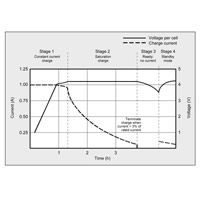If always true, nobody could measure their actual battery voltage at the charge socket, on the battery, as the BMS would prevent that.Modern e-bike batteries come with a BMS that disconnects the charger once it is charged. So you really do not need to worry about having your charger connected to a timer unit.
Simples!
Of the few different e-bike batteries I have actually looked at myself, and when people here are asked to measure that voltage, most manage that, as the battery voltage was there to be measured.....I have always been able to measure battery voltage, did the BMS see my Multi Meter approaching or what?
But I am not saying ALL batteries/BMSs are made so.
Maybe some expensive batteries are made differently, but I have a cheap bike! And all the other bike batteries I could read the voltage when needed.
The BMSs I have looked at, do not seem to rely on the charger for power for balancing, because if they did AND CURRENT WAS TAKEN FROM THE CHARGER, the charge LED would be RED, and not GREEN.It could even be detrimental, as you don't know how out of balance the banks of cells are in your pack and it could take several hours to achieve balance, which is done at the end of a cycle. Only charging for a fixed time could prevent adequate time for balancing as no two charging cycles are the same.
The Green LED is only switched on at a very low charge point! Below 3% of rated charge.
They simply use the higher voltage in one bank of cells (banks are unballanced, some are at a higher or lower voltage!) to feed a "low" bank, effectively reducing all banks to the state of the worst bank!
That is an old wives tale about the BMS using the charger, that too many believe wrongly.....
Just look very carefully at the graphic on that Battery University about Li-Ions and when charging is finished. At 3% of rated current..

Also, the damage is done if you leave the charger in an ON state, to the battery with the "Stage 4" Occasional topping charge!
You can see that graphic here, just in case you believe I made the graphic:-

Charging Lithium-Ion Batteries
Review simple guidelines for charging Lithium-based batteries and prolong battery life such as; a portable device should be turned off while charging and more.
batteryuniversity.com
You have this partly wrong, the lowest level that a NICAD or NMIH battery should be discharged to, if memory serves me correctly, is 1 volt!Completely discharging a pack was done in the days of NiCd cells that used to suffer the memory effect. Lithium cells don't have a memory effect problem and deep cycling is never good for battery life, so avoid it.
Also, there are different schools of thought on this memory effect, you have to look around and pick the one you most believe in!
Memory: Myth or Fact? – Battery University
Discover if memory is myth or fact, and how to prevent and eliminate it
batteryuniversity.com
NiCd Battery Memory Effect » Electronics Notes
The memory effect associated with nickel cadmium or Nicad / NiCd batteries was a limiting factor in these cells: find out what it was and how to prevent it
It was reputed that the effect was first noticed in satellites where the Sun was used when it was available, but the NiCd batteries were used when the satellite passed over the dark side of the Earth. Accordingly the batteries were repeatedly partially discharged and then immediately recharged again without experiencing a full discharge. Soon it was discovered that their overall capacity was reduced as they "remembered" the amount by which they were normally discharged.
In a Satellite, the batteries receive charge always at exactly the same point in the orbit, and it went at another same point in the orbit. That never happens on earth, as clouds alone change that for solar cells, but most charge from a mains that is more reliable than that!
But as NICADs are made differently since sometime in the 1990s, the memory effect has been for earthly uses, as good as not there anymore.
And even Satellites don't use NICADs anymore!
I trust that I have awakened your interest!
Andy







